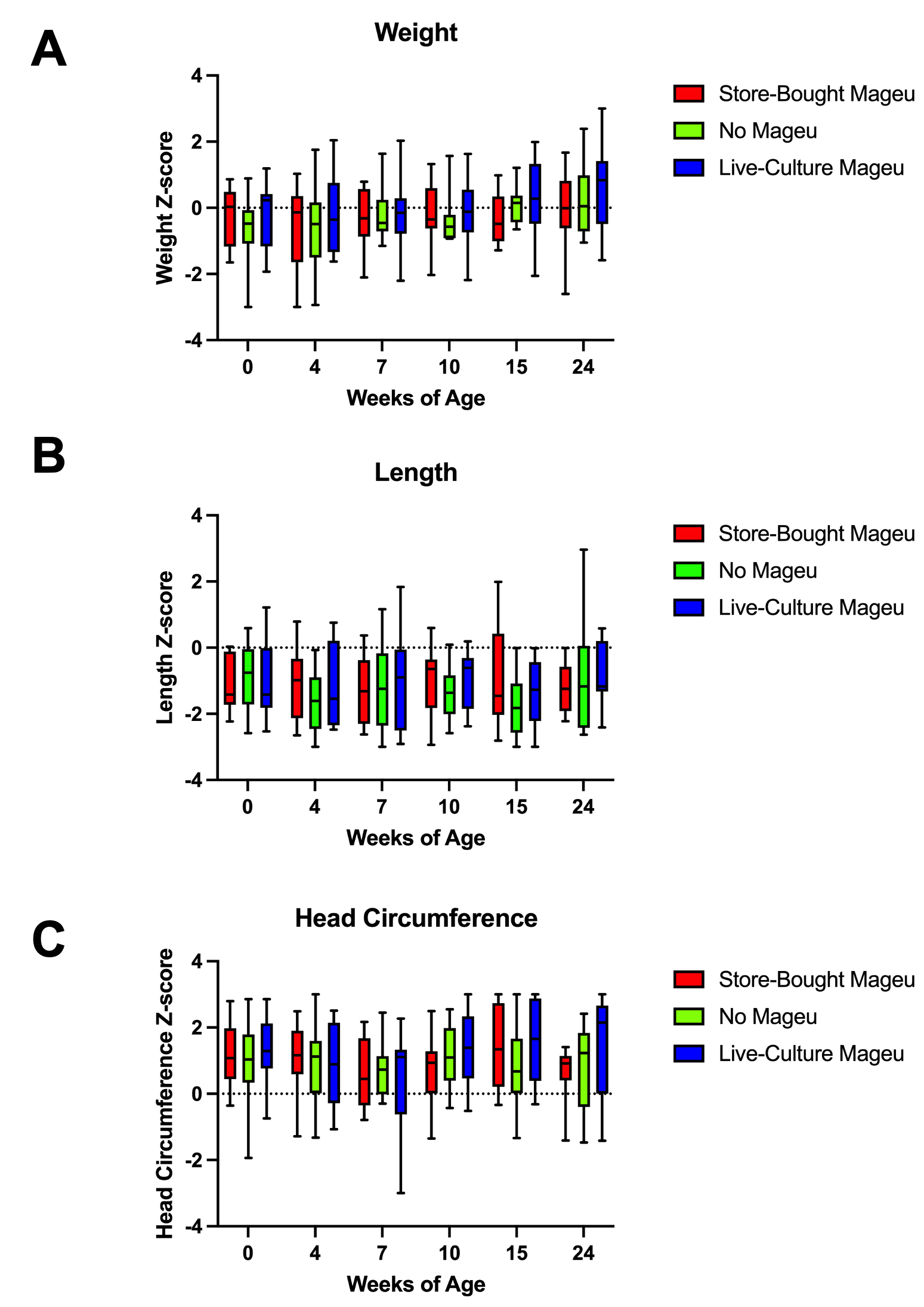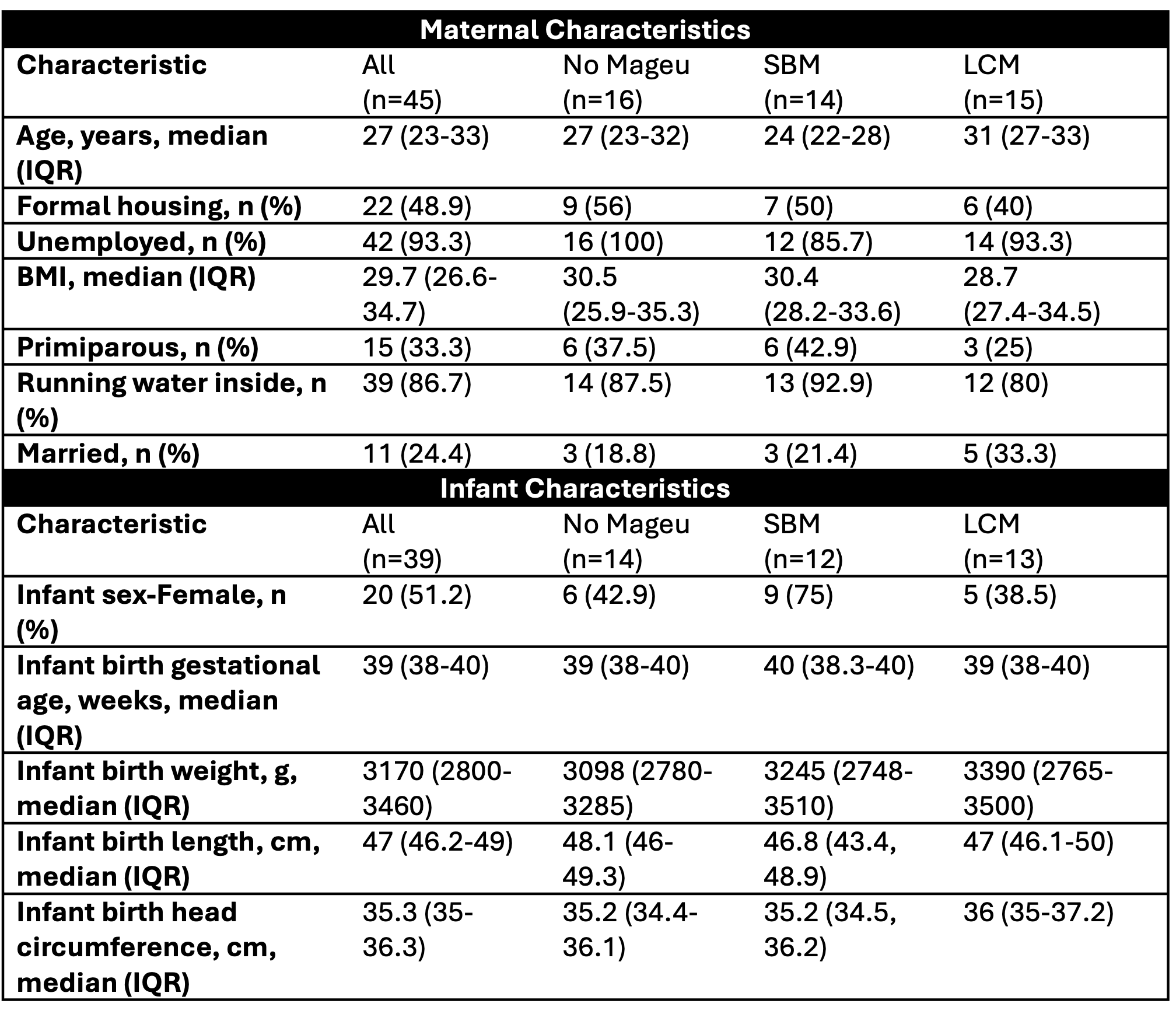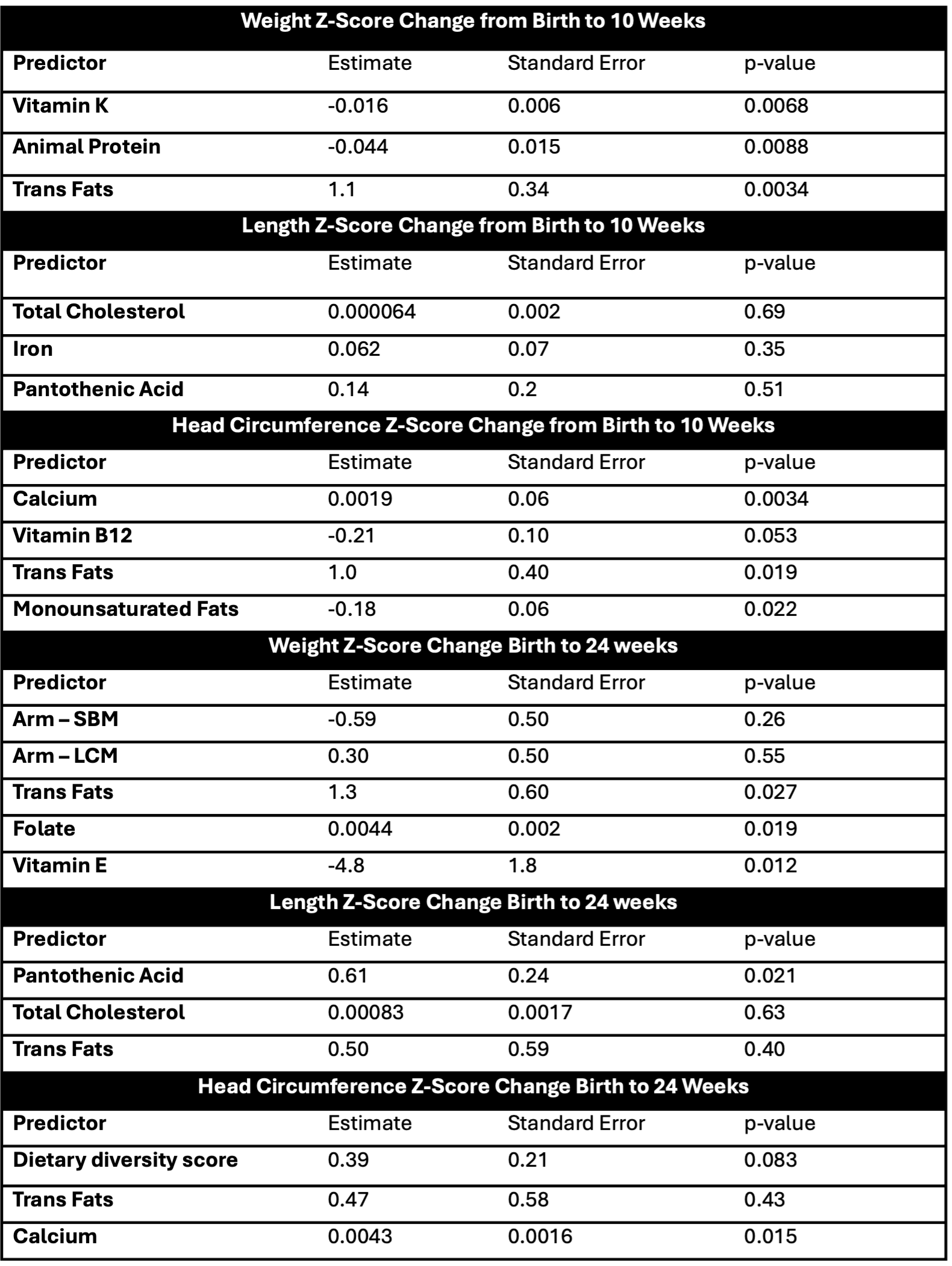Global Neonatal & Children's Health 4
Session: Global Neonatal & Children's Health 4
776 - Impact of Maternal Fermented Food Diet on South African Infants
Sunday, April 27, 2025
8:30am - 10:45am HST
Publication Number: 776.5151
Katie M. Strobel, University of Washington School of Medicine, Burien, WA, United States; Anna-Ursula Happel, University of Cape Town, Cape Town, Western Cape, South Africa; Obakeng Luthando. Jona, University Of Cape Town, Cape Town, Western Cape, South Africa; Sonia Malczyk, University of Cape Town, Cape Town, Western Cape, South Africa; Brian Kullin, University of Cape Town, Cape Town, Western Cape, South Africa; Jo-Ann S. Passmore, University of Cape Town, Cape Town, Western Cape, South Africa; Marijke A. Fagan-Endres, University of Cape Town, Cape Town, Western Cape, South Africa; Marjanne Senekal, University of Cape Town, Cape Town, Western Cape, South Africa; Heather Jaspan, Seattle Children's Research Institute, Seattle, WA, United States

Katie M. Strobel, MD, MSCR (she/her/hers)
Assistant Professor Division Neonatology
University of Washington School of Medicine
Burien, Washington, United States
Presenting Author(s)
Background: Lactating mother nutrition is critical to the health of both the mother-infant dyad, and in South Africa, significant disparities contribute to infant stunting. Fermented foods such as Mageu, a South African porridge, have evidence of benefits to gut microbial health, decreasing inflammation, and increasing the bioavailability of nutrients. There is no research to date on how maternal consumption of differing preparations of fermented foods during lactation impacts the infant.
Objective: The study objective aimed to assess if maternal daily consumption of varying Mageu preparations versus no Mageu during lactation from 4 to 10 weeks post-partum impacted infant growth.
Design/Methods: This was a pilot randomized control trial of 45 women and their infants in Khayelitsha, South Africa. Following enrollment at birth, women had a four-week washout without fermented foods. During the intervention, 4 to 10 weeks post-partum, women consumed their randomized intervention (daily live-culture Mageu [LCM], store-bought pasteurized Mageu [SBM], or no Mageu). Three 24-hour dietary recalls were performed at weeks 4, 7, and 10. The South Africa Food Database was used to calculate the mean energy and nutrient intake adjusted for intra-person variability. WHO sex-adjusted infant weight, length, head circumference z-scores were measured from birth to 24 weeks. Changes in z-score from birth to 10 weeks (end of intervention) and birth to 24 weeks (end of study) were measured. PCA and LASSO were utilized to select maternal dietary and clinical variables associated with growth.
Results: Cohort characteristics of mothers and infants are described in Table 1. Growth z-scores over time by the Mageu arm are shown in Figure 1. Adjusting for gestational age, no intervention arm was significantly associated with change in weight, length, or head circumference z-scores at either time point. Multiple dietary variables were selected in each infant anthropometric z-score change model, and trans fats were most selected and associated with increased growth (Table 2). The intervention arm was selected in the weight z-score change model from birth to 24 weeks, and there was a nonsignificant weight decline observed for SBM and a weight increase for LCM.
Conclusion(s): A fermented diet may impact weight growth, but various maternal dietary measures were more significant drivers of growth. Maternal fat consumption was most frequently associated with infant growth. Larger trials should evaluate an earlier and lengthier fermented food intervention to determine impacts on growth and neurodevelopment.
Figure 1
 A) Weight, B) length, and C) head circumference infant z-scores across time by maternal cohort throughout the entirety of the study.
A) Weight, B) length, and C) head circumference infant z-scores across time by maternal cohort throughout the entirety of the study.Table 1
 Table 1. Maternal and infant cohort characteristics. Median (interquartile range, IQR) for continuous variables and n (%) for categorical variables. Infant data was available for 39 infants. SBM represents store-bought Mageu. LCM represents live-culture Mageu.
Table 1. Maternal and infant cohort characteristics. Median (interquartile range, IQR) for continuous variables and n (%) for categorical variables. Infant data was available for 39 infants. SBM represents store-bought Mageu. LCM represents live-culture Mageu.Table 2
 Multivariable linear regression of anthropometric z-score change from birth to 10 weeks and birth to 24 weeks. Predictor variables were assessed for contribution to variance using PCA. LASSO was utilized for variable selection. SBM represents store-bought Mageu. LCM represents live-culture Mageu.
Multivariable linear regression of anthropometric z-score change from birth to 10 weeks and birth to 24 weeks. Predictor variables were assessed for contribution to variance using PCA. LASSO was utilized for variable selection. SBM represents store-bought Mageu. LCM represents live-culture Mageu.Figure 1
 A) Weight, B) length, and C) head circumference infant z-scores across time by maternal cohort throughout the entirety of the study.
A) Weight, B) length, and C) head circumference infant z-scores across time by maternal cohort throughout the entirety of the study.Table 1
 Table 1. Maternal and infant cohort characteristics. Median (interquartile range, IQR) for continuous variables and n (%) for categorical variables. Infant data was available for 39 infants. SBM represents store-bought Mageu. LCM represents live-culture Mageu.
Table 1. Maternal and infant cohort characteristics. Median (interquartile range, IQR) for continuous variables and n (%) for categorical variables. Infant data was available for 39 infants. SBM represents store-bought Mageu. LCM represents live-culture Mageu.Table 2
 Multivariable linear regression of anthropometric z-score change from birth to 10 weeks and birth to 24 weeks. Predictor variables were assessed for contribution to variance using PCA. LASSO was utilized for variable selection. SBM represents store-bought Mageu. LCM represents live-culture Mageu.
Multivariable linear regression of anthropometric z-score change from birth to 10 weeks and birth to 24 weeks. Predictor variables were assessed for contribution to variance using PCA. LASSO was utilized for variable selection. SBM represents store-bought Mageu. LCM represents live-culture Mageu.
